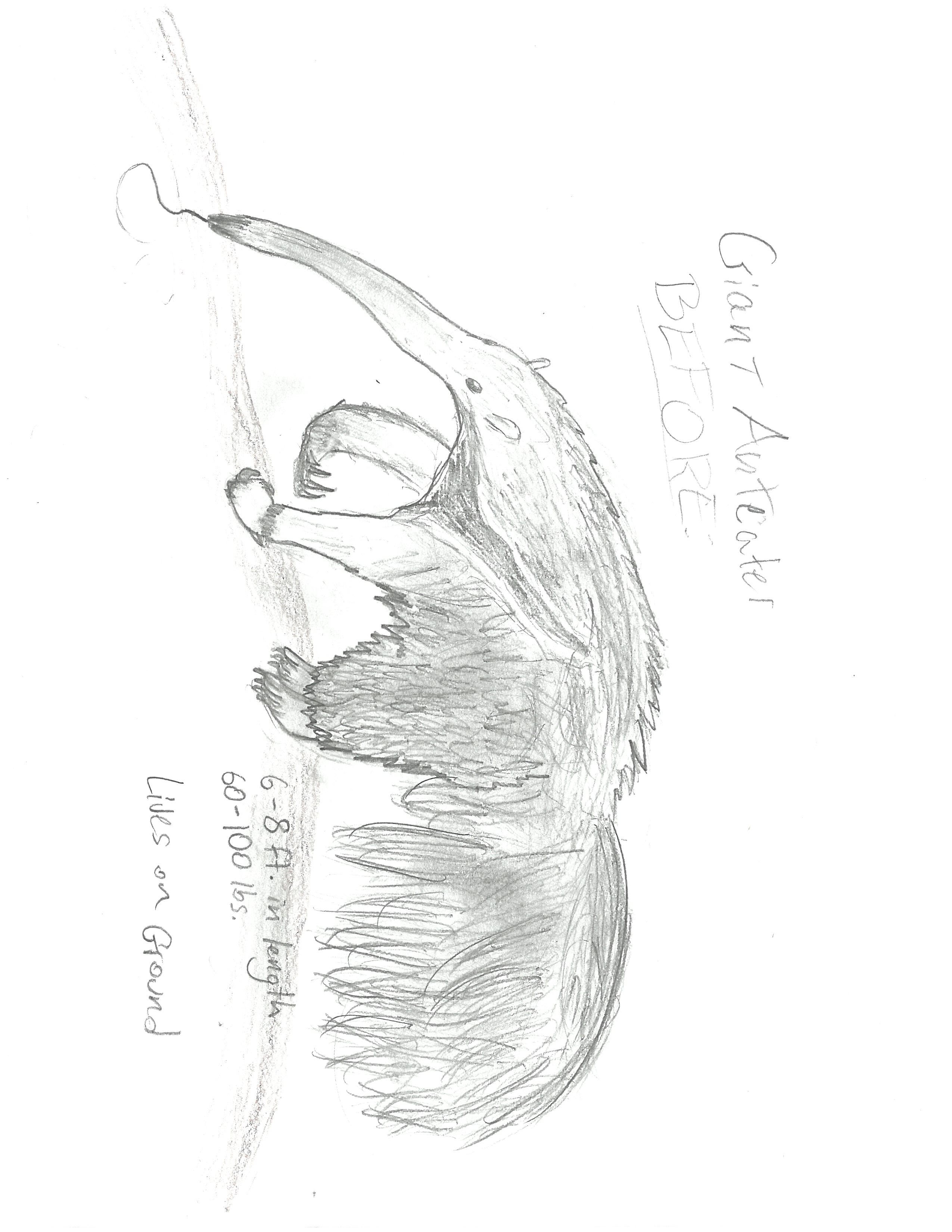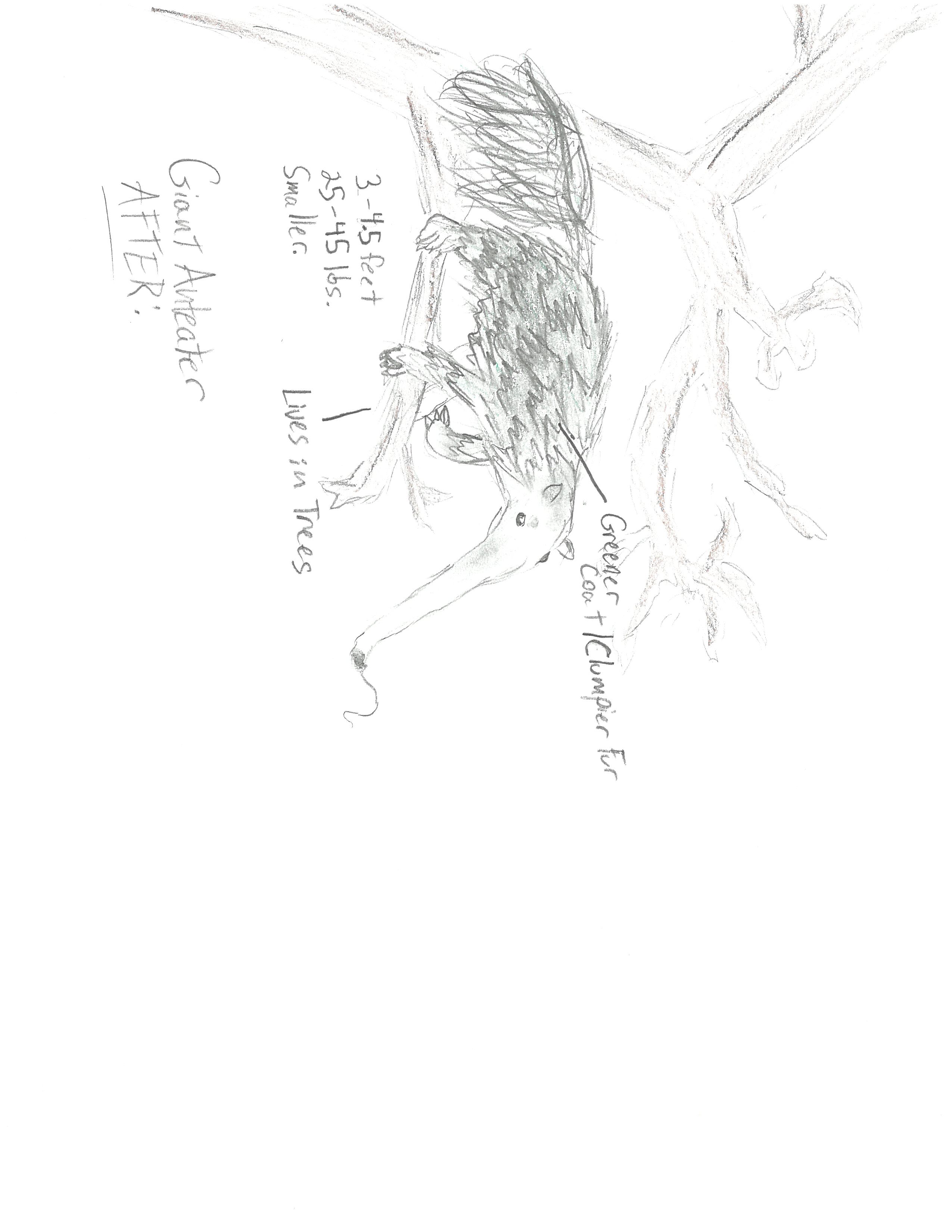Currently, the giant anteater uses its tongue and amazing sense of smell to dig into grounded insect nests and consume its inhabitants. It is better adapted to eating bugs from the ground, unlike its smaller cousins who prefer bugs that they find in the trees. The giant anteater is very slow and capable only of a stumbling run, which is obviously not helpful to surviving when its predators are agile cats.
With global warming will come more floods to the rainforest area, making underground nests not a viable option for a food source. So, the giant anteater may take to the trees. To do this, the anteater will have to become smaller. Also, to better ensure safety from predators, its fur will become slightly greener and it may begin to grow in clumps to look more like leaves. This can help the anteater to camouflage from predators.
Contact us
Thank you for your interest in contacting Future Engineers. We look forward to connecting with you!
General Inquiries
support@futureengineers.orgSponsorship Inquiries
sponsor@futureengineers.org

